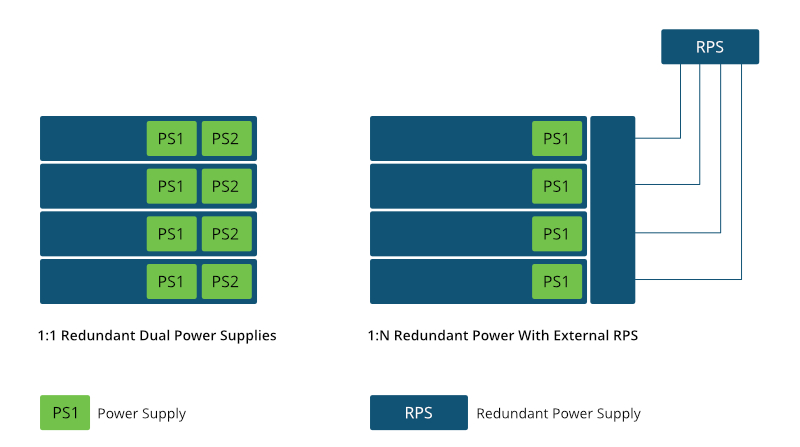Currently, most switches on the market, especially old switches, only use a single power supply. If the power supply fails (such as power failure), the switch cannot operate normally, or even paralyze the network.Redundant power supplies are an ideal solution to this problem. Switches designed with redundant power supplies can greatly improve network stability and ensure uninterrupted operation of equipment. So, what is a redundant power supply and why should a switch adopt a redundant power supply design?
What is a redundant power supply?
Redundant power supply refers to the design of a single network device using two or more physical power supplies, and each power supply can independently power the device. At this time, even if a power supply fails, other power supplies will immediately bear the power supply load of the equipment to ensure the normal operation of the equipment. Servers or disk arrays usually adopt redundant power supply design, which can effectively avoid power outages or other failures (such as downtime) of equipment. Now, redundant power supply design is becoming more and more popular in network switches and other equipment due to its unique advantages.
Overview of switch redundant power supply
Power supply redundancy generally adopts power supply modes such as complete redundancy and partial redundancy. Full redundancy (also called 1+1 redundancy) means that the switch is equipped with two power modules. If one power module fails, the other power module can continue to supply power normally without affecting network operation. Partial redundancy (1+N redundancy) means that “1 additional power supply” supplies power to “N” switches. Please note that the disadvantage of local redundant power supply is that there is a time interval for power switching, that is, the backup power supply needs to supply power to the device after a certain period of time, which may cause network interruption. Figure 1 shows the different working modes of full redundancy and partial redundancy.

Generally, the dual power supply in the network switch adopts a fully redundant power supply design. Please note that under normal circumstances, both power supplies will be powered on and work at the same time. However, due to different equipment manufacturers, the backup power supply of some fully redundant switches provided by manufacturers may also be idle.
Post time: Nov-10-2020





